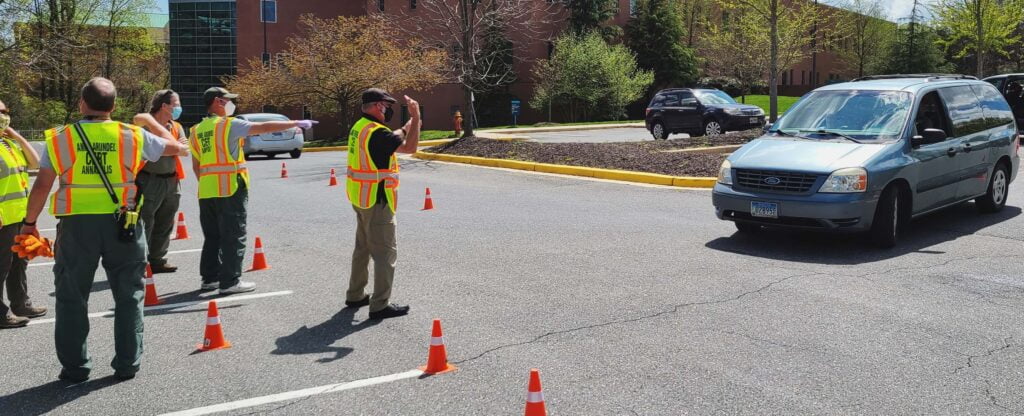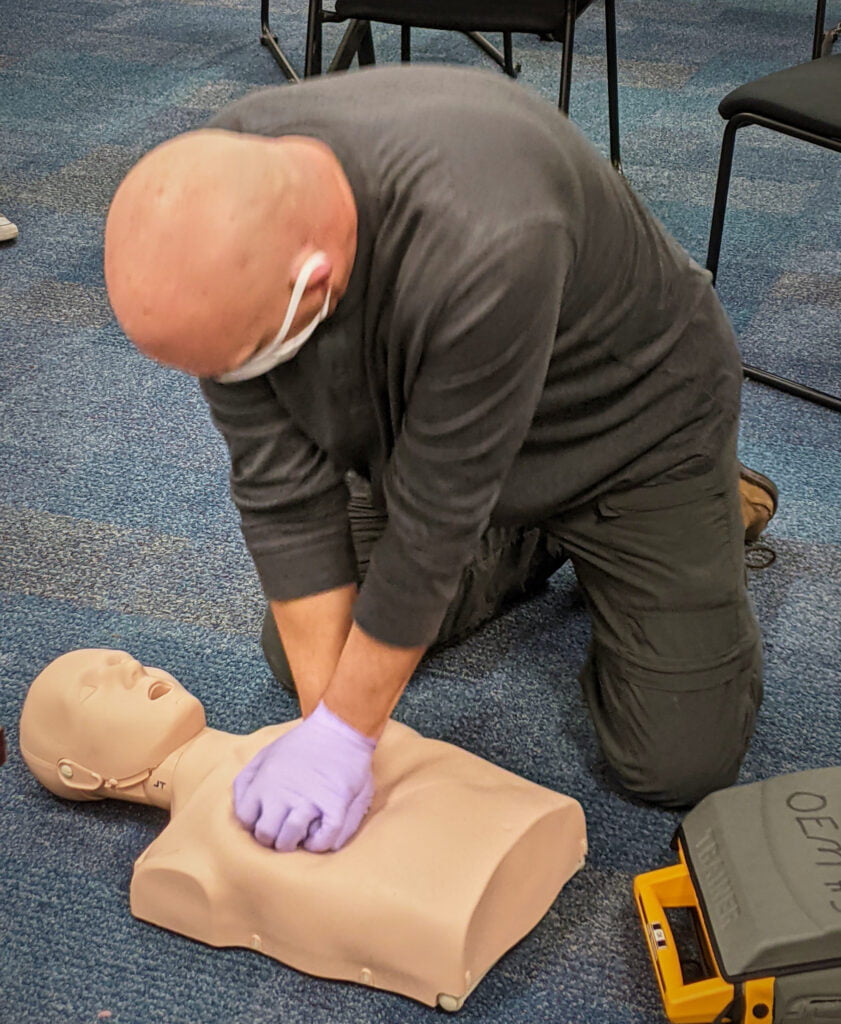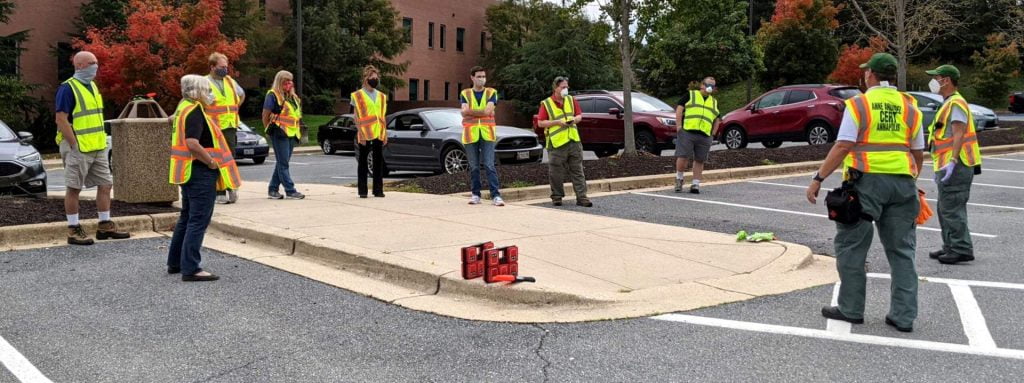2026 FAST Meeting and Training
Meeting followed by training and hands-on practice. Details will be sent via email notice with a sign up form.
2025 July Monthly Training
For AAACERT members only. An invite has been emailed to all members. AAACERT Monthly Training — Disaster Behavioral Health with Captain Jennifer Bornemann from the U.S. Department of Health and Human Services’ Administration for Strategic Preparedness and Response (ASPR).
2025 September Monthly Training
For AAACERT members only. An invite has been emailed to all members. AAACERT Monthly Training — TBA.
2025 August Monthly Training
For AAACERT members only. An invite has been emailed to all members. AAACERT Monthly Training — Topic to be announced.
2025 AAACERT Members CPR Class
Private class for AAACERT members only. If you or your community, business, team, or group are interested in a CPR class, please contact us at savelives@aaacert.org
2025 SKYWARN
AAACERT members are invited to SKYWARN virtual course. Check your email for the invite. Presentation Details: The classes are designed to educate the public on weather threats in this area, as well as strengthen the ties between the NWS and the local community. The more spotters the NWS has out there, the faster vital ground […]
2024 Traffic Management Training (Fall)
This approximately four-hour training is led by AAACERT skilled traffic management members and is a combination of classroom instruction and practical exercises. To remain qualified in Traffic Management, you must take this training with one year of the last training or within one year of the last time you volunteered to perform traffic management with […]
Please Continue Turning Left

Do they see me? Did they hear my command to stop? You should never assume the answer to these questions is YES. One of the more common tasks members of AAACERT participate in is traffic control. A group of AAACERT members underwent training on April 11, 2021, at Anne Arundel Community College in Arnold. President […]
Members train in CPR, AED, and Basic First Aid

WHAT DO YOU DO? You’re at home, work, or simply grocery shopping. You hear screaming and see someone bleeding badly from the arm and a small cut on their head. Many people can freeze in a situation like this but those trained in life-saving techniques of Cardiopulmonary Resuscitation, Automated External Defibrillator, and Basic First Aid […]
Members Train To Use The Emergency Response Guide (ERG)

When we’re driving the highways and byways, we often see trucks with ominous signs that have numbers below the image. What do these signs mean? What should we do if there is an accident involving one of these vehicles? Members of Anne Arundel-Annapolis Community Emergency Response Team recently attended a presentation on these hazard symbols […]
Members Take Traffic Training

Members of the Anne Arundel-Annapolis Community Emergency Response Team (AAACERT) underwent Traffic Control training on Oct. 9, at Anne Arundel Community College in Arnold. President Bruce Morgenstern and Coordinator Joe Dorffner served as instructors. Before the practical exercise, members attended a 1-hour virtual class. AAACERT members routinely perform traffic control at many sites around the […]
Emergency Sanitation and Hygiene Training
AAACERT hosted its first online training via Zoom on March 25, 2020, on the topic of emergency sanitation and hygiene. President Bruce Morgenstern welcomed participants and explained that AAACERT is using this interactive video platform to practice safe social distancing during the pandemic of the novel coronavirus that causes COVID-19. The presenter, Public Information Officer […]
Training for Response to Opioid Overdose
An opioid is any drug that contains opium or its derivative. Opioids vary in lethality per individual and circumstances. The effects of an opioid overdose can be reversed by naloxone (brand name Narcan).
Biological Incidents and the Role of CERT
Ms. Arlene G. Crow, Emergency Manager for Anne Arundel Community College, recently provided training to the Anne Arundel-Annapolis Community Emergency Response Team (AAACERT) on the operational members’ potential role in a biological incident. Ms. Crow began the session by outlining the various forms and categories of bio-agents that might trigger a need for prophylactic dispensing […]
CERT Members Complete SARTECH III Course
From June 21 to June 23, 2019, Anne Arundel – Annapolis Community Emergency Response Team (AAACERT) hosted Search and Rescue (SAR) training, certifying members as entry level “non-wilderness” responders. Thirteen AAACERT members and two CERT members from other counties are now certified as SARTECH III by the National Association for Search and Rescue. This certification […]
Monthly Training Explores Dangers of Improvised Explosive Devices
On Wednesday, May 15, Anne Arundel-Annapolis Community Emergency Response Team (AAACERT) President Paul Bowling conducted the group’s monthly training, focusing this iteration on CERT safety in incidents of improvised explosive devices and bombings. The training was held at Anne Arundel Community College. Among the many new facts Paul shared with the group, he reminded attendees […]
Wide Area Search Class
When disaster strikes, it can be a challenge to effectively mobilize, organize, and deploy resources needed to perform wide area searches. This course is an excellent training opportunity for any jurisdiction or agency that may face such an emergency. The course content applies to a vast number of critical situations, including natural disasters or terrorist […]
National Traffic Incident Management (TIM) Responder Training
TRAINING DESCRIPTION: A new coordinated, multi-disciplinary training program, developed through the national Second Strategic Highway Research Program (SHRP2), is being offered for all emergency responders and those supporting Traffic Incident Management operations – police, firefighters, EMS, state and local departments of transportation, towing, and other incident responders. The purpose is to promote a shared understanding […]
Call Taker Training – Wednesday, January 20th
AAA CERT members, The Emergency Operations Center is hosting Call Taker Training ahead of the potential storm later this week. When: January 20th from 7 p.m. to 8:30 p.m. Where: EOC Purpose: Review call taker procedures, phone usage, WebEOC, and general EOC information. Please contact Chrissy Calp at fdcalp00@aacounty.org ASAP if you are available to […]
Skywarn Basic Spotter Class
Anne Arundel – Annapolis CERT and the Anne Arundel County Office of Emergency Management is sponsoring a Skywarn Basic Spotter Class. This class will be presented by professional Meteorologist from the National Weather Service from Sterling Virginia. This course is a prerequisite for all other courses. Basics I is a good general overview of what it […]